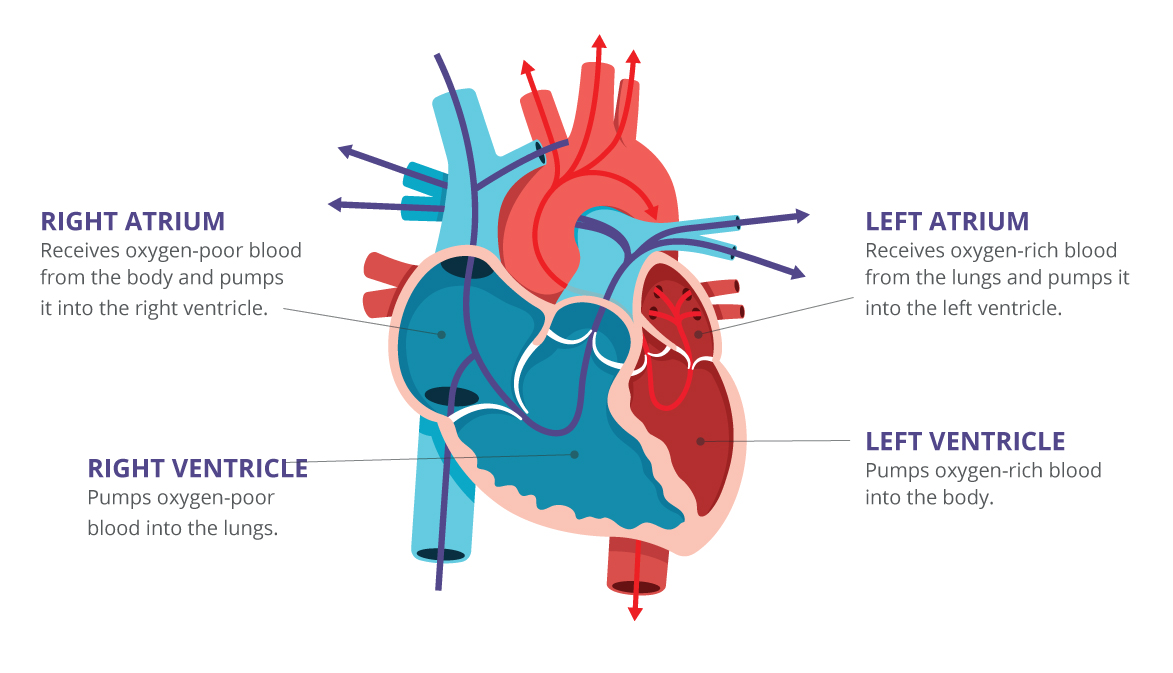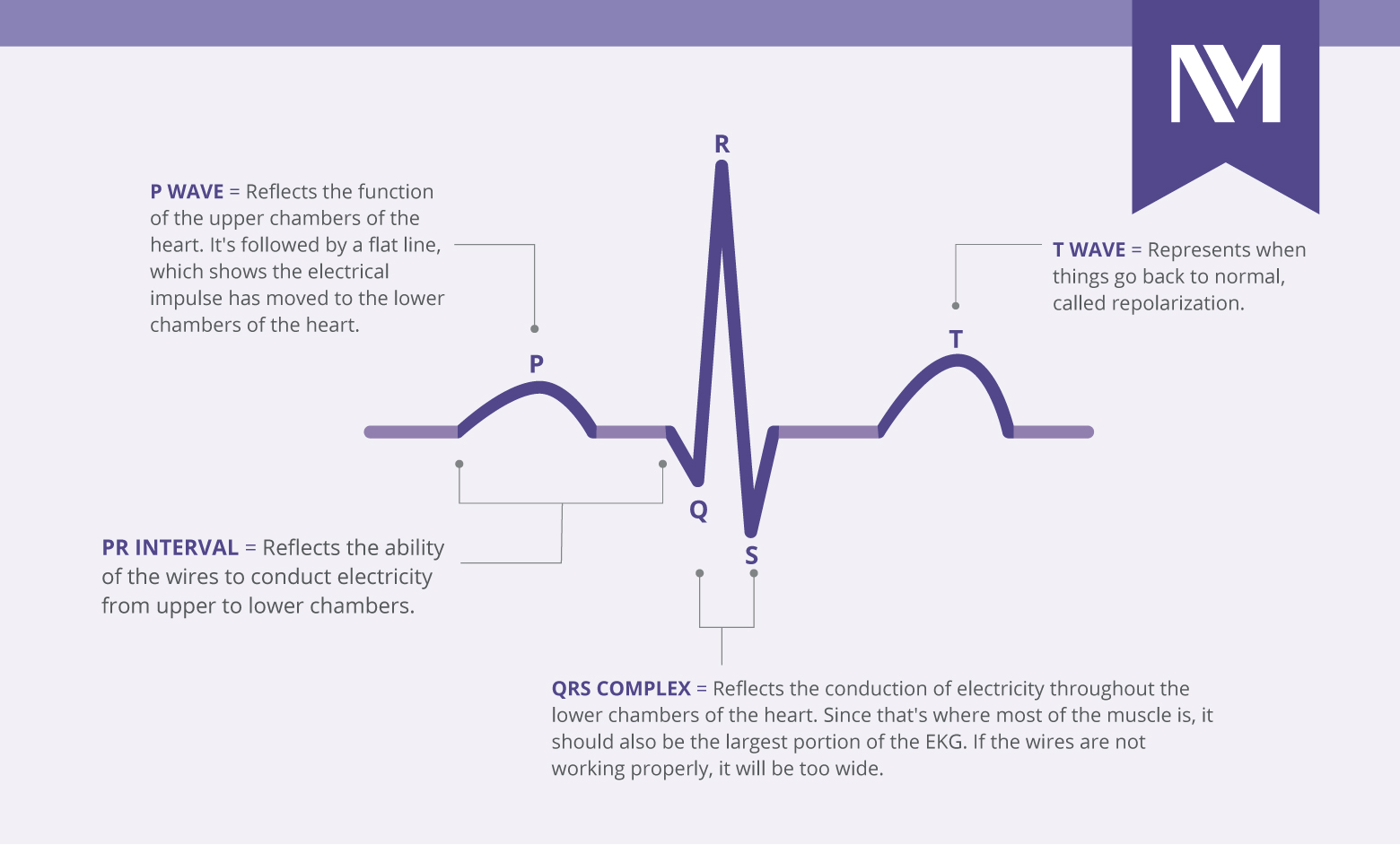How to Read an EKG (Infographic)
Published February 2019
What It Says About Your Heart
It takes years of training to understand the nuances of an electrocardiogram (EKG), but understanding the basics can help you be a better-informed member of your care team. A Northwestern Medicine cardiologist explains what you need to know about an EKG.
Basics of the Heart
Your heart has four main chambers: a right and left atrium, and a right and left ventricle. The right side of your heart, which includes your right atrium and right ventricle, takes in blood that is depleted of oxygen and pumps it to your lungs. The left atrium then receives the oxygen-rich blood from your lungs and, with the help of your left ventricle, pumps this blood throughout your body to deliver oxygen to your cells.
As your blood moves through your body, your cells remove its oxygen. Oxygen-poor blood then returns to the right side of your heart, which sends it back to the lungs, and the cycle continues. Your heart does this roughly 100,000 times a day, pumping around 2,000 gallons of blood.
What Does Your Heart Look Like?


How an EKG Works
An EKG measures electrical activity of the heartbeat, which is your body’s way of moving blood. Heartbeats are created by an electrical impulse that causes the heart to contract, or squeeze. This pushes blood through the chambers. The EKG translates the heart’s electrical activity into visible waves. The size and relationship between waves can tell your physician if the electrical signal is being conducted normally or if there are areas of injury in the heart.
By measuring your heart’s electrical activity, an EKG can detect if your heartbeat is regular, irregular, too fast or too slow. It can also indicate if your heart is overworked. This information can be especially important if you are preparing for surgery or another procedure that may affect your heart.
To conduct an EKG, a member of your care team will place electrodes directly on your chest. These will detect your heart’s electrical impulses. There is no pain associated with an EKG, and you will not actually feel any electrical current.
Basics of an EKG

What You Need to Know
“Every cardiac complaint begins with an EKG, whether you have chest pain, shortness of breath or an irregular heartbeat,” says Micah J. Eimer, MD, cardiologist and medical director of Northwestern Medicine Glenview Outpatient Center and Northwestern Medicine Deerfield.
Needless to say, this little organ — around the size of your fist — is quite impressive, and an EKG is just one way to keep an eye on it. The most important thing for you to pay attention to is if your heartbeat is too fast or too slow. A normal resting heart rate should range from 60 to 80 beats per minute. However, someone who is physically fit with a strong heart may fall below that average.
Learn more about taking care of your heart.






